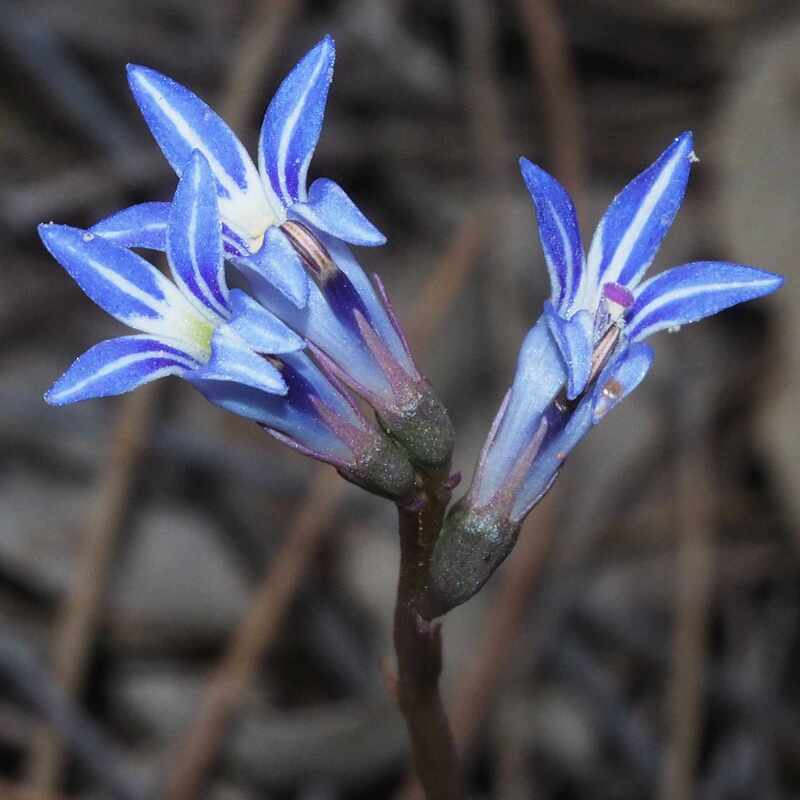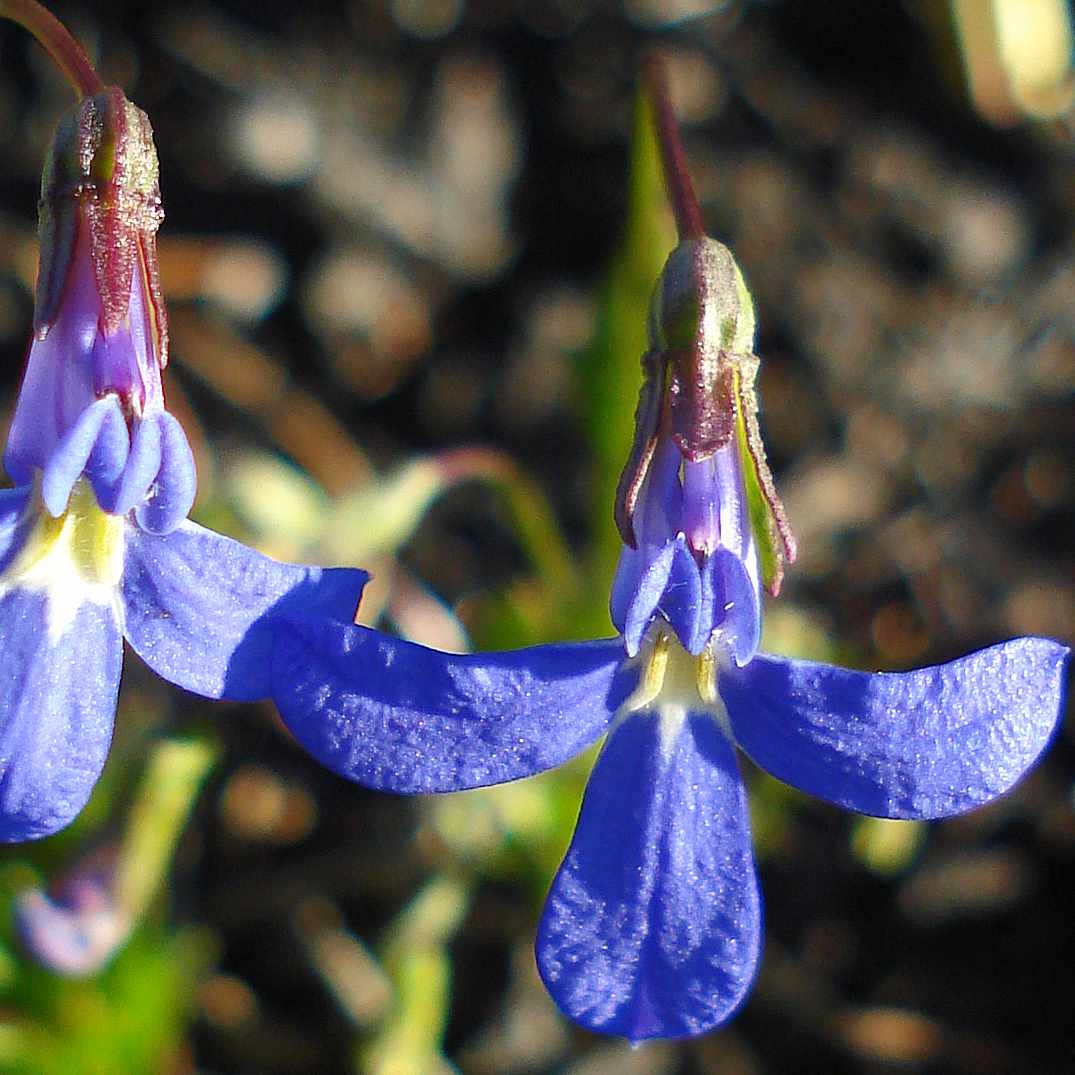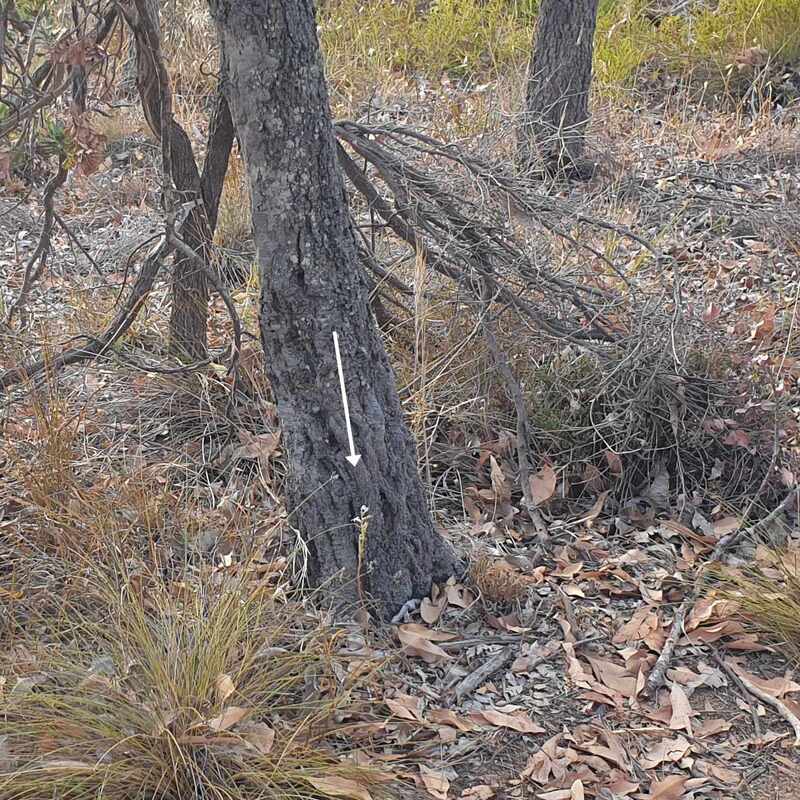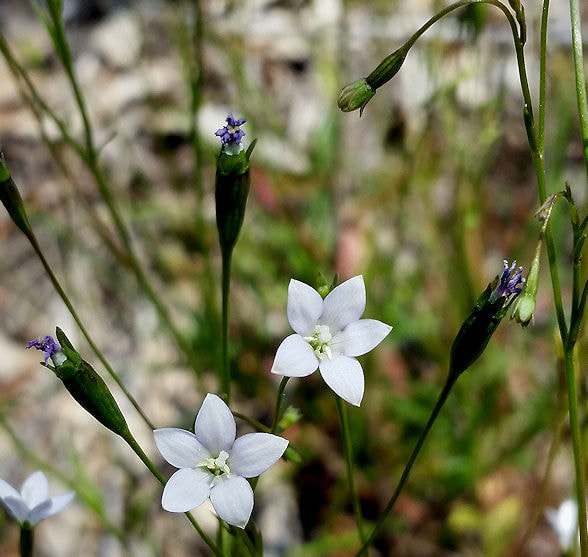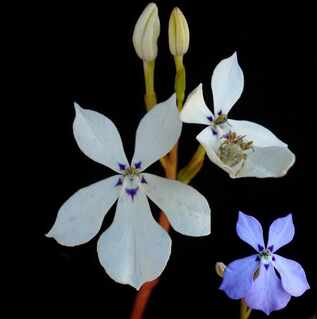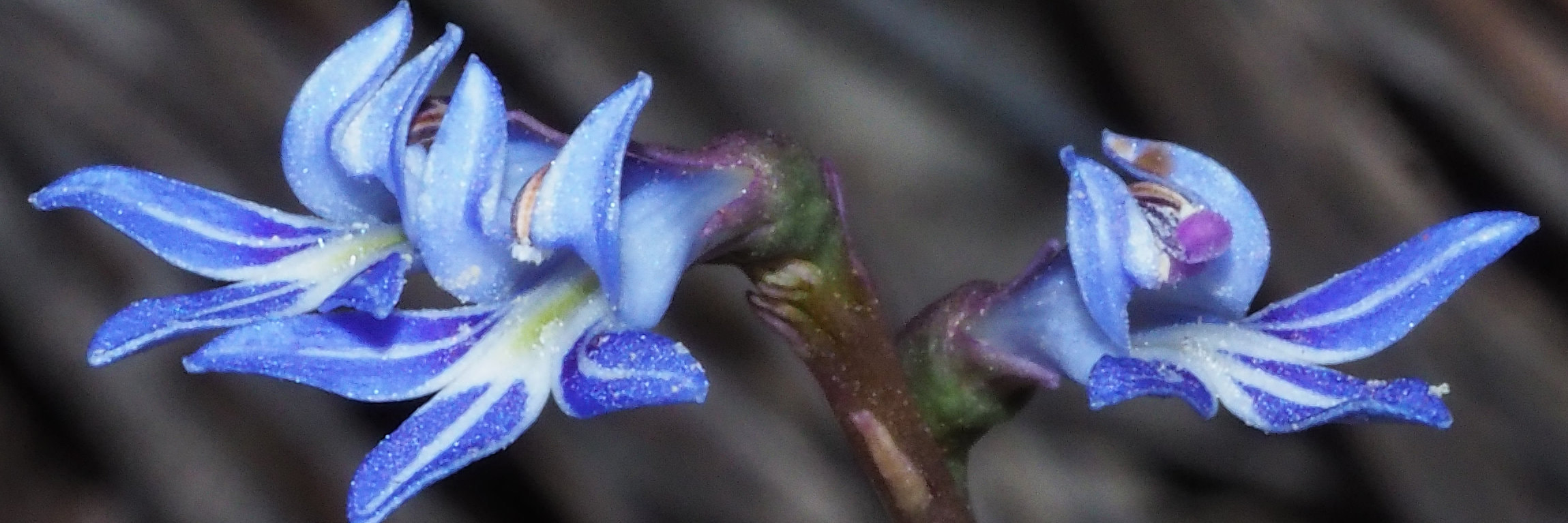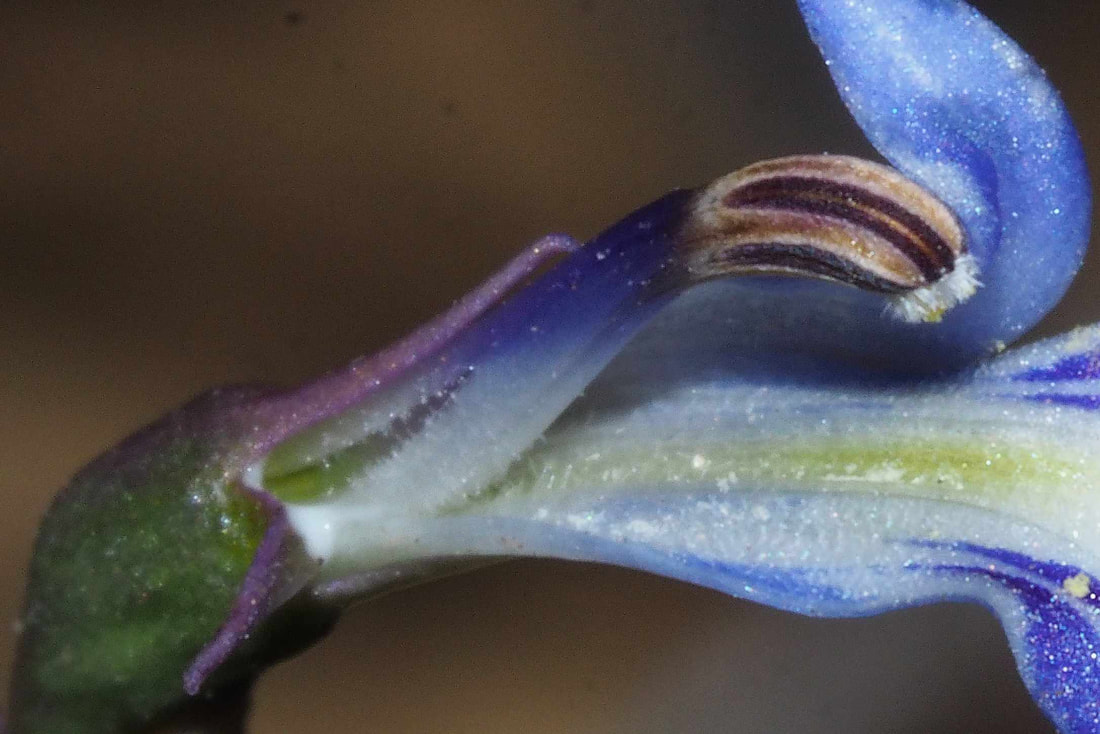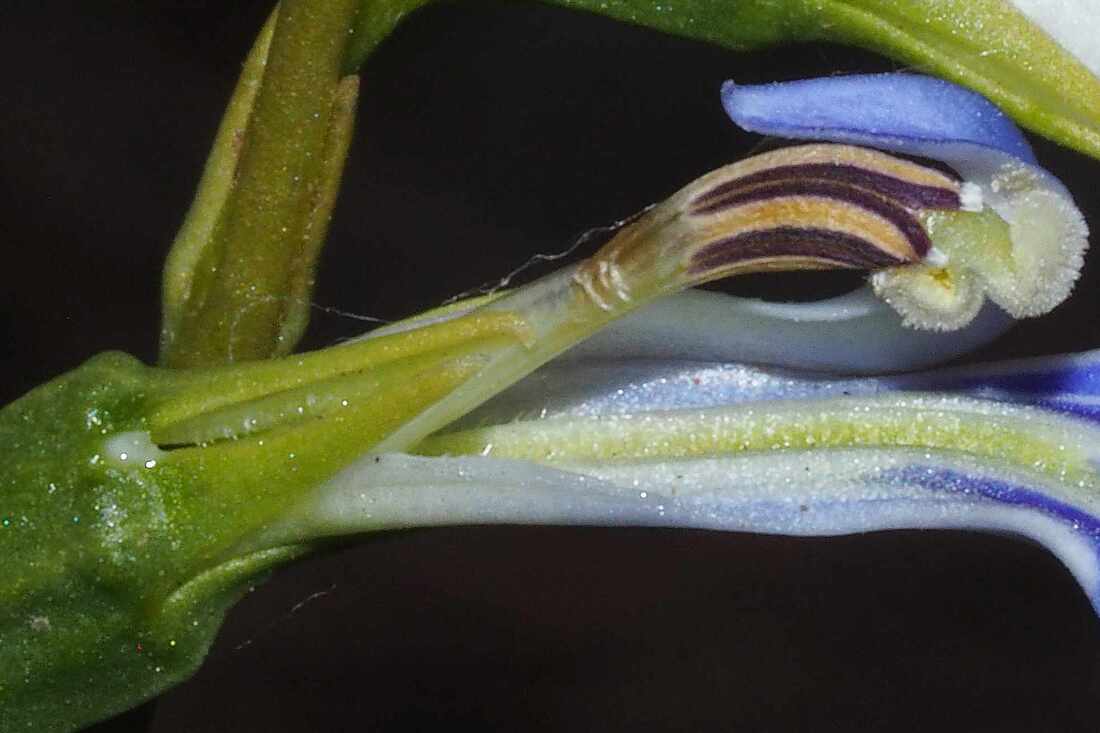Tiny (1cm) delightful blue Tall Lobelia Lobelia gibbosa flowers are out now. Each single stemmed plant has small, withered leaves on a fleshy stem with one to four pale blue striped flowers that are hard to spot, but is worth the search.
The larger Tufted Lobelia Lobelia rhombifolia (October/November) also has (deep) blue flowers that remind me of a fleur-de-lis. They are hardy annuals that only occur in ones or twos, mostly and sandy spots with little vegetation. I think they would flourish after a fire.
They share these distinctive features.
- Inferior (under the flower) ovary.
- They exude a nasty sticky white sap when cut.
- Instead of starch they store energy as inulin. Unlike starch, inulin is digested in the colon rather than in the stomach, and is very good for gut health. Before you harvest lobelias for the inulin, note that it may cause gaseous eruptions in the bowel department (a curse on Jerusalem artichokes!), and:-
- Some plants contain toxins. The common name for Isotoma hypercrateriformis is Woodbridge poison.
- Some plants like Lobelia gibbosa and Isotoma hypercrateriformis have fleshy stems that enable flower and seed formation to continue long after the leaves have died.
- Campanulaceae and Asteraceae (sunflower family) have a remarkable stigma and stamen arrangement that is described in the extract below from this web page.
Inside the flower, the five stamens are arranged closely together around the central female style and are often fused together, thus forming a little cylinder. When they are mature, the stamens release their pollen into the centre of the tube they form, where the pollen collects. The style will then grow longer, slowly pushing the mass of pollen out of the tube, where it then falls on the backs of bees that visit the flower for nectar. Once all the pollen is pushed out and the female style is mature, the tip will split open to reveal sticky surfaces where it can receive pollen from other flowers. In other words, the flower will not pollinate itself, because the pollen is released and pushed out of the way before it is ready to be pollinated.
After much crawling around on tick-infested ground I managed to photograph this arrangement in Lobelia gibbosa. From the flower base, the tube curves up through a split in the upper petals and down again to end where it will brush the back of insects entering the flower.
